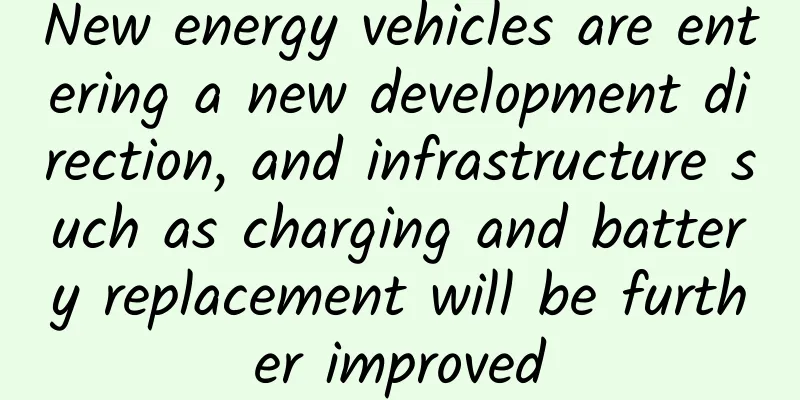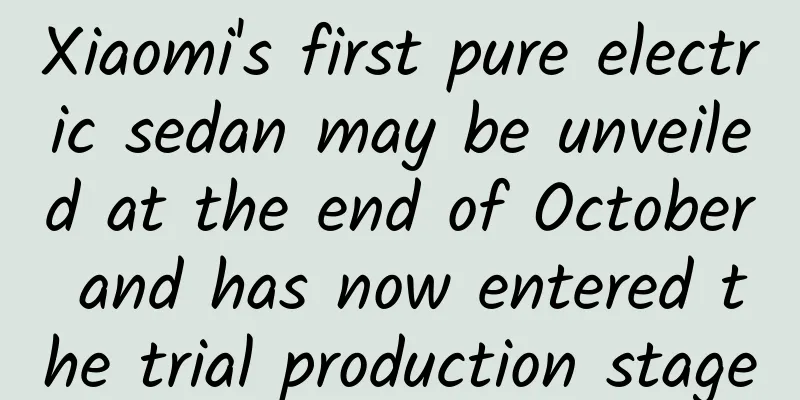New energy vehicles are entering a new development direction, and infrastructure such as charging and battery replacement will be further improved

|
The new energy vehicle industry, which has been included in the government work report for seven consecutive years, was absent for the first time this year, but the related charging piles, battery swap stations and battery recycling were included in the report for the first time. The original text of this year's report mentions these keywords: "Steady increase in major consumption such as automobiles and home appliances, cancel unreasonable restrictions on second-hand car transactions, increase parking lots, charging piles, battery swap stations and other facilities, and accelerate the construction of a power battery recycling system." Although there is only a short sentence in the report, it involves multiple industries and points out the direction for the future development of China's new energy vehicle industry. Subsidies decline, growth rate stabilizesAccording to data, in 2020, my country's production and sales of new energy vehicles reached 1.366 million and 1.367 million respectively, an increase of 7.5% and 10.9% year-on-year respectively, setting a record high in production and sales. According to the China Association of Automobile Manufacturers, China's production and sales of new energy vehicles will exceed 1.8 million units in 2021. It can be seen from the data that my country's new energy vehicle market is in a stable development stage, and the growth rate and other aspects remain relatively stable, without a significant decline in growth. On December 31, 2020, the Ministry of Finance, the Ministry of Industry and Information Technology, the Ministry of Science and Technology, and the National Development and Reform Commission issued a notice on further improving the financial subsidy policy for the promotion and application of new energy vehicles (hereinafter referred to as the "Notice"), stating that the subsidy standard for new energy vehicles in 2021 will be reduced by 20% from the 2020 level. Regarding the decline in subsidies for new energy vehicles, 91che believes that the impact on the development of the industry will not be as obvious as before, because after more than two years of rapid development, the production cost of new energy vehicles has been further reduced, and the price of the vehicle itself is already affordable enough. Take Tesla as an example. When Tesla released the domestically produced Model 3 standard range upgrade version in 2019, the price was 355,800 yuan. After the subsidy in December 2019, the price was adjusted to 331,000 yuan. In January 2020, the price was adjusted to 299,000 yuan. In April 2020, in order to comply with the policy that "the pre-subsidy price of new energy passenger vehicles must be below 300,000 yuan", Tesla adjusted its price again to 271,550 yuan after subsidies. With the continuous improvement of Tesla's domestic production rate, the Tesla Model 3 standard range upgrade version readjusted its price on October 1, starting at 249,900 yuan after subsidies. As the prices of new energy vehicle products continue to fall, subsidy policies are no longer the main factor affecting consumer decisions.In fact, judging from user feedback, the current focus restricting the development of new energy vehicles has shifted to the improvement of related facilities such as charging. Supporting facilities need to be further improvedDing Lei, member of the National Committee of the Chinese People's Political Consultative Conference and CEO of NetEase, also mentioned several issues such as the standardization of new energy vehicle batteries in his proposals to the two sessions this year. Ding Lei proposed a proposal to "promote the establishment of national standards for new energy vehicle batteries", and suggested the introduction of national mandatory standards for power batteries, "unified specifications, interoperability and interchangeability"; making battery swap stations a focus of new infrastructure, effectively solving the pain point of limited cruising range, promoting the development of new energy vehicles, and contributing to the "battle for blue skies." This year's government work report also proposed a requirement to steadily increase the construction of electric vehicle battery swap stations. The construction of battery swap stations will become a new hot spot in the new energy vehicle charging and battery swap service market.According to data released by the China Electric Vehicle Charging Infrastructure Promotion Alliance, as of the end of December 2020, the cumulative number of charging infrastructure nationwide was 1.681 million units, and the ratio of cars to charging piles was approximately 3:1. Regarding the development of electric vehicles, Zeng Qinghong, a member of the 13th National People's Congress, Secretary of the Party Committee and Chairman of GAC Group, said when introducing his suggestions for this year's two sessions that he combined the focus of the automobile industry and hot issues of people's livelihood, and put forward a number of suggestions to promote the deepening development of China's automobile industry from the life cycle of automobile production, use to scrapping. He mentioned: "The lack of charging convenience has seriously affected the user experience. In addition, the imperfection of fast charging pile technology has also affected the speed of charging. Currently, fast charging piles take 40 to 60 minutes, and slow charging piles take 8 to 10 hours." Representative Zeng Qinghong suggested that on the one hand, we should strengthen the construction of supporting infrastructure and consider issues such as land use planning, charging station layout, and distribution facility construction in advance when renovating old cities and developing urban-rural fringe areas. The new power supply should focus on upgrading and renovating the power supply in old residential areas and urban villages to solve these electricity problems.In order to solve the problem of charging/swapping of electric vehicles, State Grid Corporation of China has been continuously exploring in the process of building battery swap stations, forming a new application of a series of battery swap modes covering buses, passenger cars, heavy trucks, low-speed vehicles, etc. Among them, State Grid Electric Vehicle Company has deepened cooperation with the upstream and downstream of the passenger car industry chain, signed strategic cooperation agreements with OEMs such as BAIC, FAW, Dongfeng, and Weilai, actively explored the application of the "vehicle-battery separation" business model, jointly built and operated battery swap stations, and promoted the "three-in-one" of battery swap stations, charging stations, and energy storage stations. It is understood that this year State Grid Electric Vehicle Company will vigorously promote the construction of battery swap stations across the country. It will build 100 public battery swap stations in Beijing, Wuhan and other places within the year, and invest in the construction of more than 10,000 low-speed vehicle battery swap cabinets in major cities across the country. It is estimated that during the 14th Five-Year Plan period, more than 1,000 public and commercial battery swap stations and more than 100,000 low-speed vehicle battery swap cabinets will be built across the country, greatly improving the portability of electric vehicle charging and swapping. 91che believes that under the leadership of the State Grid and other departments, in addition to accelerating the construction of charging/battery swapping facilities, it will also help to achieve the early realization of unified battery swapping/charging standards. Taking NIO's battery replacement model as an example, due to the lack of unified standards, Therefore, 91che expects that after this year's two sessions, the new energy vehicle industry will usher in stable development in charging facilities, and users' travel will become more convenient. Automakers continue to focus on improving battery lifeImproving charging facilities is one of the key points in expanding the development of new energy vehicles. Ultimately, it depends on the product strength of new energy vehicles. Short driving range is a problem that electric vehicles cannot avoid at present, especially in the cold winter, the shortcomings are more obvious. When charging facilities are not as popular as gas stations, long driving range not only reflects the actual needs of car owners, but also can alleviate the psychological anxiety of users when using the car. On January 9, NIO released the ET7 with a range of over 1,000 km; on January 13, Zhiji Auto, jointly created by SAIC Group, Zhangjiang Hi-Tech Park and Alibaba Group, released a smart pure electric sedan and a smart pure electric SUV, supporting a range of nearly 1,000 km; on January 15, GAC Aion released a preview that the upcoming new battery can provide a range of 1,000 kilometers. However, in the vision released by the manufacturers, some people in the scientific community expressed different opinions on the "Great Leap Forward in Battery Life". Earlier this year, at the China Electric Vehicle 100 Forum, Ouyang Minggao, an academician of the Chinese Academy of Sciences and vice chairman of the China Electric Vehicle 100, said: "If someone tells you that this car can run 1,000 kilometers, can be fully charged in a few minutes, is very safe, and has a low cost, he must be a liar based on current technology." In other words, it still takes a long time to achieve a 1,000km battery life, and if the popularization time is added, the process will be extended again.Stephan Wöllenstein, CEO of Volkswagen Group China, also expressed his opinion on this. He believes that "for a range of 1,000 kilometers, the cost of such batteries is very high, and the battery volume will also be larger. Extremely lightweight body materials are needed to reduce the weight of the entire vehicle, and the price cost will become increasingly high." Feng Sihan believes that whether from the perspective of battery raw material mining, development and manufacturing costs, or environmental protection, a range of 1,000 kilometers deviates from the original intention of popularizing electric vehicles.According to current consumer research, 90% of current private trips are within 100 kilometers. In this regard, Wang Binggang, director of the Technical Committee of the National Electric Passenger Vehicle Technology Innovation Alliance, said that convenient charging can solve the range anxiety of most people. Based on this, 91che believes that instead of placing all hopes on improving battery efficiency, it is better to build charging facilities while waiting for technological progress. When the cruising range reaches 800~1000km, users' range anxiety will be completely eliminated, and the new energy vehicle market will naturally expand further. my country has become the world's largest new energy vehicle market. After the two sessions, the new energy vehicle market will surely have a more specific development direction and measures, and related industries will also embark on a new journey. With the continuous improvement of charging/battery replacement facilities, the sales of new energy vehicles will surely reach new heights. As a winner of Toutiao's Qingyun Plan and Baijiahao's Bai+ Plan, the 2019 Baidu Digital Author of the Year, the Baijiahao's Most Popular Author in the Technology Field, the 2019 Sogou Technology and Culture Author, and the 2021 Baijiahao Quarterly Influential Creator, he has won many awards, including the 2013 Sohu Best Industry Media Person, the 2015 China New Media Entrepreneurship Competition Beijing Third Place, the 2015 Guangmang Experience Award, the 2015 China New Media Entrepreneurship Competition Finals Third Place, and the 2018 Baidu Dynamic Annual Powerful Celebrity. |
>>: "91 Ten Articles" - A daily must-read briefing for the new energy vehicle industry (210309)
Recommend
Chengming Taiyi Jiuku Tianzun Dharma Training Course (Seventh Session, March 2021)
Chengming Taiyi Jiuku Tianzun Dharma Training Cou...
Why does food make people happy or sad?
Author: Fu Jia, deputy chief technician, Changchu...
10 design principles that developers should know
Why should I care? Developers are designers too, ...
There are maggots growing in my garbage dump, and you tell me it's a good thing?
Full text insect terror warning! On a rainy morni...
Introduction to CPD advertising in OPPO App Store
FAQ - Distributing Ads Q1: Why does the ad CTR su...
Android solves ListView loading picture flickering
Recently, I was responsible for leading the compa...
NetQin plans to sell Feiliu. A good ending is the best beginning.
Recently, the news that NetQin released on its of...
Both friend and foe, what impact do microorganisms have on human health?
Microbes are the kings of the earth Creating habi...
Moments ads have been upgraded. Now you can chat with advertisers in Moments
Yesterday, a magical advertisement appeared on We...
Do you know SELinux in Android?
Introduction to SELinux SELinux (Security-Enhance...
Microsoft Office iOS version is now available on the App Store
Microsoft had previously announced that it would ...
[Farming in the 24 Solar Terms] Qingming: A good time to plant beans with drizzles
During the Qingming Festival, the weather is clea...
How does a brand do marketing? If Apple sells apples, would you buy them? ?
Let’s first look at two interesting marketing hyp...
A 23-year-old woman suffered kidney poisoning after applying a whitening facial mask. How to determine whether there is mercury in cosmetics?
Audit expert: Zhang Yuhong Chief Physician of the...









